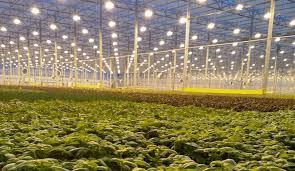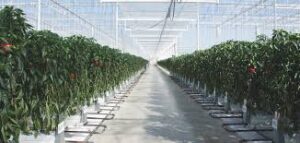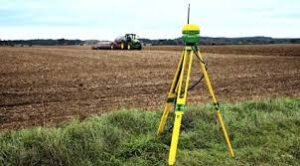Top 10 Best Agricultural Innovations In 2020
 Top 10 Best Agricultural Innovations In 2020
Top 10 Best Agricultural Innovations In 2020
Technology has come to stay and apparently change the way we do things. It has cut across many businesses and industries, and the agricultural world is not an exception. Agriculture has gone through a great shift due to technology over the years. As at 2019, the global population reached about 7.7 billion with majority shifting to the agricultural sector. There has been a major focus on ways to improve farming and create more sustainable farming practices, and this can only be achieved through new technologies. Agricultural innovations have been able to deal with pest management and invasion, quality control, and disease management.
These innovations are essential steps to enable current and future generation of farmers to farm and grow with ease and without compromising the important needs of the earth. Farmers often face major problems due to minimal hands to plant and harvest, and this is where technology comes in. There are new technologies that will change the landscape of farm and make farming more interesting and easier.
Here are 10 best agricultural innovations in 2020.
- Laser Scarecrows
Birds have been known to be one major problem of farmers, and they haven’t been able to solve this problem even with the traditional scarecrow. Pests such as blackbirds, crows, and starlings can destroy up to 75% of crop produce within 3 days of harvest, which obviously leads to a great loss in revenue. Farmers have tried different methods to get rid of birds from their farms, to no avail. With the invention of laser scarecrow, farmers can now keep birds away for good. The laser scarecrow projects a green laser lighting that is not visible to humans in the sun. birds are sensitive to green colors, and so this makes it more effective in keeping them away. It is environmentally friendly and requires no stress to operate. It has an auto-targeting system on birds.
- Harvest Quality Vision (HQV)
This is a new technology that improves the process of harvesting fruits and vegetables by eliminating the need for manual inspections. A number of fruits, like apples, are harvested per time and this means that it is not possible to manually inspect them all before putting into storage. HQV uses computerized scanners to analyze and determine the quality and quantity of farm produce at once. It uses a camera to grade produce and this implies better sorting and management without tampering with the natural nutrients of the crops. When there is a deviation, defects or shortage in quantity, the device gives an alert, and farmers can take the right course of action early. With this device, farmers can be sure of getting the right amount of produce from their farm, and also ensures good quality products.
- Product testing in-field or on-site (Lightlab)
Some crops like Hemp or Cannabis requires thorough and highly regulated testing and reporting. Extra costs are incurred for carrying out such tests, hence, the need for an on-site innovation that can reduce the cost, and the time for waiting for laboratory results. Lightlab is a portable and lightweight equipment that can accurately test crops on farm. Testing and sampling of crops can now be carried out on the field, saving time and extra cost for farmers.
 Top 10 Best Agricultural Innovations In 2020
Top 10 Best Agricultural Innovations In 2020
- Bee Vectoring
This is a new innovation for disease control management on the farm. The device uses a naturally occurring fungus (BVT-CR7 or Vectorite) that protects crops from a number of diseases. The Vectorite solution is placed inside a hive of bees raised commercially and the bees collect the solution every time they leave the beehive. As the bees fly around the farm, the solution is distributed and helps to control diseases among the crops. It also improves plant growth and increase the shelf life of crops. The advantage of this technology is that it doesn’t use chemical pesticides, and this helps to retain the natural nutrients of the crops.
- Automated Farm equipment
Automated equipment helps to reduce the stress of getting things done, and agricultural has incorporated this technology with the invention of automated farming equipment. Machines like seeder or self-driven tractors can work round the clock to produce higher yields in a short time. They allow farmers to work on other things while they do the job of planting, grading, or even harvesting. Farmers no longer have to bother about menial or manual labor on their farms.
Read Also: Top 5 IT Innovations that will Blow Your Mind in 2021
- Radio-Frequency Identification (RFID)
RFID is a technology that uses radio waves to get information tagged to an object. It operates like a barcode, but this is more efficient in a farm setting such that they can read things from several feet away in the dirt. Croptracker is an example of RFID that is used for harvest, storage and crop packaging. It eliminates data errors by means of automation, and makes it possible to refer to the data when there’s a need for it. This technology makes it possible for customers to know the origins of the products.
- Real-Time Kinematic (RTK)
RTK is a new innovation technology used to improve the accuracy of GPS signals. It works by eliminating the errors that come up with GPS, and brings it to accuracy. It is used in land surveying, and the aim is to analyze and tell which treatment is best for the plants and the land. It also helps to accurately predict farm yields and expenses.
 Top 10 Best Agricultural Innovations In 2020
Top 10 Best Agricultural Innovations In 2020
- Crop and Soil monitoring and management
Farming entails data collection and management, which can be stressful and open to human errors. This technology helps to give accurate data and a detailed picture of how a farm is doing. An example of this technology is FarmBeats that uses sensors, drones, tractors, and satellites for its operation.it helps farmer to accurately monitor soil fertility, like nutrients, leaves, and insect contents in soils. It helps to know the best nutrients plan that increases crop yields, and improves environmental protection. This has helped farmers to be in total control of the soil’s micronutrients, carbon content, and other factors that helps to achieve great yields.
- Minichromosome Technology
This is a technology that helps to improve the genetic traits of plants. It can also be used with genetic engineering to achieve bio-fortification, enhancement, and supplementation of crop’s nutritional values. It also increases the resistance of crops to diseases and drought. The minichromosome contain small amounts of genetic material, and therefore, works effectively without tampering with plant’s natural growth and development. This technology has not been fully utilized yet, but there is a great potential for its wide application in agriculture.
- Vertical Farming
Vertical farming helps to solve the problem of losing arable lands as it has been the case since the development of industries and globalization. The process of growing crops vertically allows you to grow more plants with limited space. In some cities where lands are few and there is a high-demand for food produce, this might be the solution. Farmers can also use greenhouse setting with the vertical farming, and this implies more crop products annually without negative effects from the climate.
Hope you enjoy this article?
Share your thoughts in the comment session.
Contact us today for your business consultancy and business advisory services. We can help you fine tune your idea, structure your business, market your business, train your staff, consult on your retirement plan, coach you for financial success. We also write business plan and help with fund raising strategies and Grant applications. We can help you start, grow and expand your business.
Call or WhatsApp us now on 081 0563 6015, 080 7635 9735, 08113205312 or send email to dayohub@gmail.com and we will solve any of your business problem.
Related